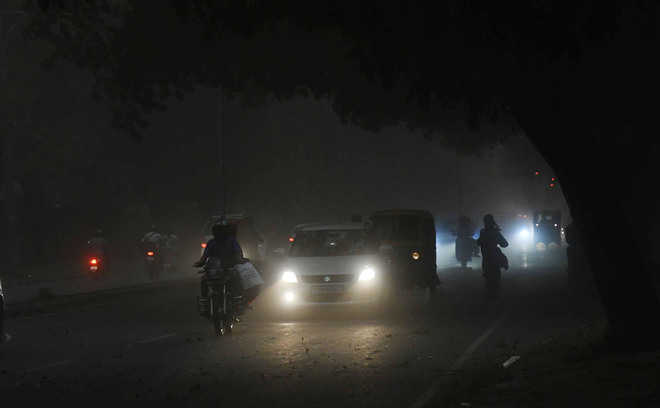Riding the storm out
Sandeep Sinha
“Thundering typhoons,” Captain Haddock, the endearing character in Herge’s Tintin comics, would have yelled at the confusion over the advisory issued by the Meteorological Department about a thunderstorm descending on the city.
As it doth happen with weather forecasts, nothing of the sort happened, and the weather remained mostly sunny on Monday, the wind and rain arriving only on Tuesday afternoon in a rather benign fashion.
Predicting the weather can be a daunting task. It is usual for the Met Department to first predict a normal monsoon and then keep revising the forecast to a near normal or average rainfall prediction. Weather scientists attribute the variance to factors like ocean currents, air pressure and temperature, among others. These are interacting variables and can bring about changes.
More than a decade back, I was sent to interview the head of the IMD in Rajasthan at his office near the Sanganer airport in Jaipur. He showed me the cloud formations and the wind speed on the computers and explained why rainfall that year would be deficient. Months later, it rained heavily.
Despite the uncertainty, the weather, especially the monsoon, has evinced great interest, because of the impact it has on the country, prompting someone like Alexander Frater of the BBC, to study the phenomenon, right from its arrival in Kerala to the culmination in Cherrapunjee.
To be fair to the weather department, the forecast this time was not all wrong, only that Chandigarh was spared. States like Rajasthan, Himachal Pradesh and Uttarakhand did experience the inclement weather. The problem in Chandigarh was that because of the warning, there was apprehension about what was in store and an initial sense of panic that dissipated as the day wore on.
Weather advisories are customary. It is done for air and sea travel and in agriculture. Many a time, people in the coastal areas or plains are evacuated and taken to a safer place because of a warning about an impending tsunami, cyclone or floods. The tsunami does not always come and cyclonic storms may make landfall elsewhere after winds change direction. But the forecast does help in taking preventive steps to save lives.
In the case of the Uttarakhand tragedy in 2013, there were reports that weather warnings were ignored, resulting in failure to take timely steps to prevent casualties. Even the warnings issued failed to pinpoint the exact areas that would be affected. It resulted in a mammoth tragedy.
In Chandigarh, the problem was the other extreme. The weather advisory was taken very seriously. As a precautionary measure, schools were shut. To be fair to the Administration, it was said that schools in Chandigarh would shut only at noon on Monday, and were said to remain open on Tuesday, but not wanting to take a risk, most schools declared a two-day holiday.
The reaction of the schools is understandable. On February 12 this year, a tragedy had taken place on the Kharar-Morinda road when a Punjab Roadways bus hit a school bus, killing a student and injuring three others. The road had become slippery after the overnight rain and the speeding roadways bus was unable to stop in time.
What a spell of rain with its resultant waterlogging, uprooted tree branches, snapped power lines, chaos on roads with traffic lights not working means, is well known. With a large number of schools in the city, shutting them means sparing children the inconvenience and also keeping the roads relatively free from chaos..
The Met Department is known to make forecasts that are long-term, short-term and medium range. Having once made a forecast, it should keep revising it and also ensure that a warning does not degenerate into panic. These days, Doppler radars are used and along with Jaipur, Lucknow and Delhi, there is one said to be in Patiala, 60 km away.
The Doppler radars are used to make a weather forecast called Nowcasting in which current weather up to 24 hours is given. It should be used judiciously to ensure that people get the right forecast, so that a whole city does not end up looking silly.
Chandigarh is a city whose residents love to flock to Shimla to watch snowfall and celebrate a White Christmas. But the spirit of adventure apart, extreme weather conditions do create problems and only on the afternoon of May 2, we had a dust storm that made the city dark at noon. People get stranded in extreme weather conditions creating fears for safety and necessitating rescue operations. And the first principle of disaster management is, “Don’t think it can’t happen to you.”
So, the importance of weather warnings cannot be underestimated. But care has to be taken that one does not go overboard. If the city was spared the trouble caused by a storm, well and good, for the warning was preventive. Why curse the Met for a trouble that did not take place.
Being wiser with hindsight is preferable to lamenting over the troubles that befall us with the onset of a natural calamity.










